Answered step by step
Verified Expert Solution
Question
1 Approved Answer
need help plz with accounting on all these 6 questions Periodic Inventory by Three Methods The units of an item available for sale during the
need help plz with accounting on all these 6 questions 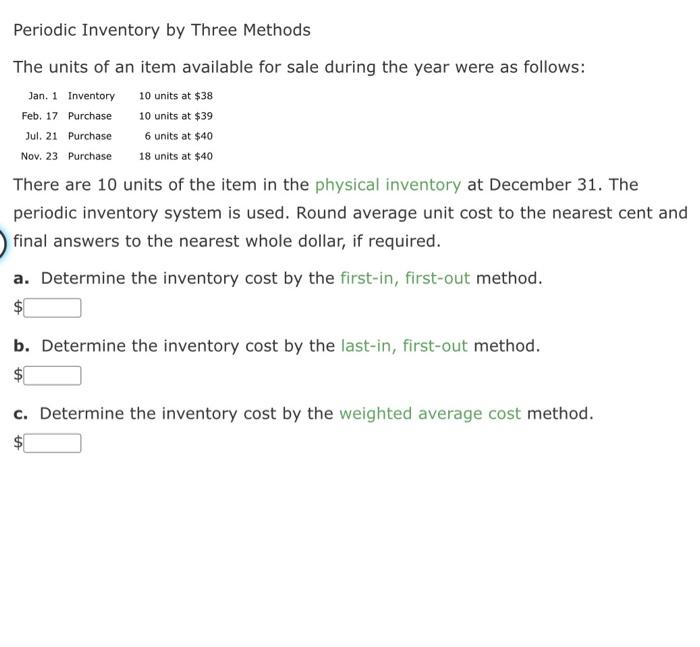
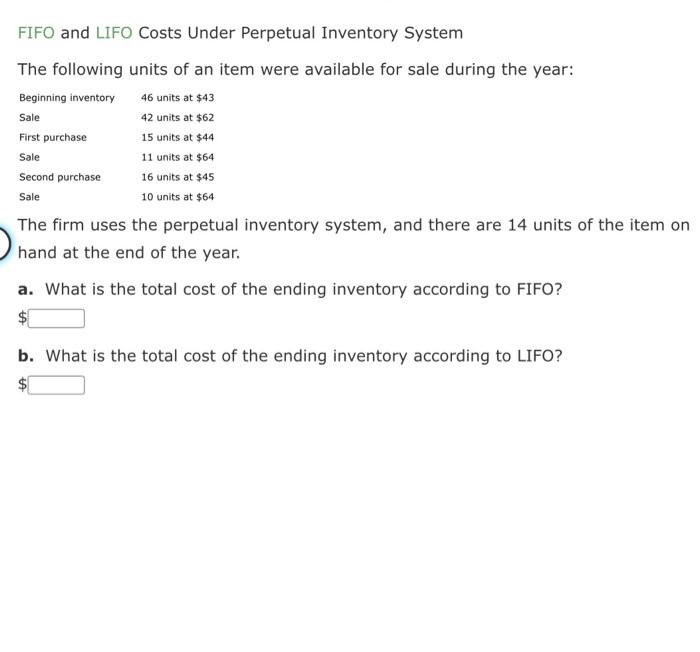
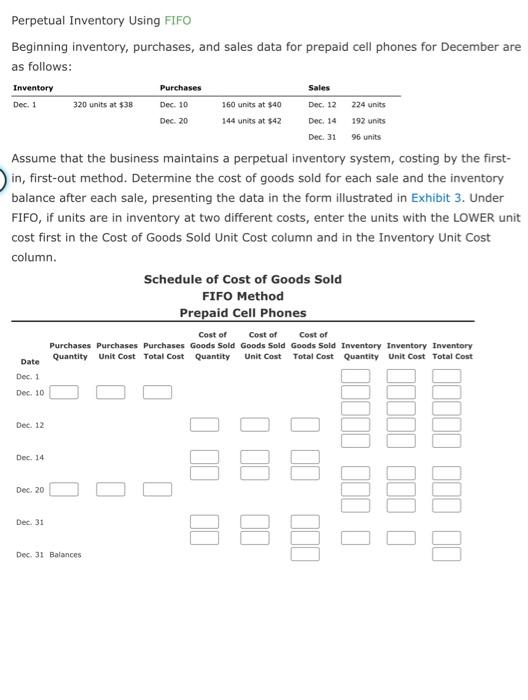
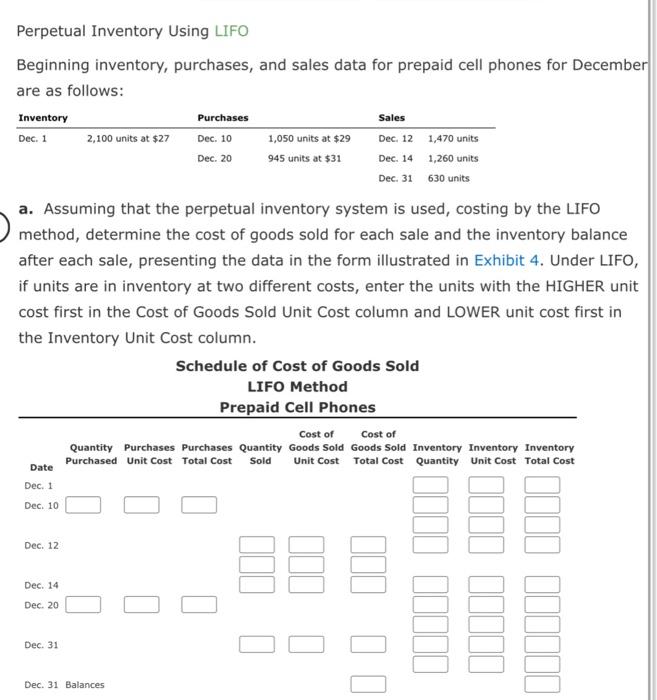
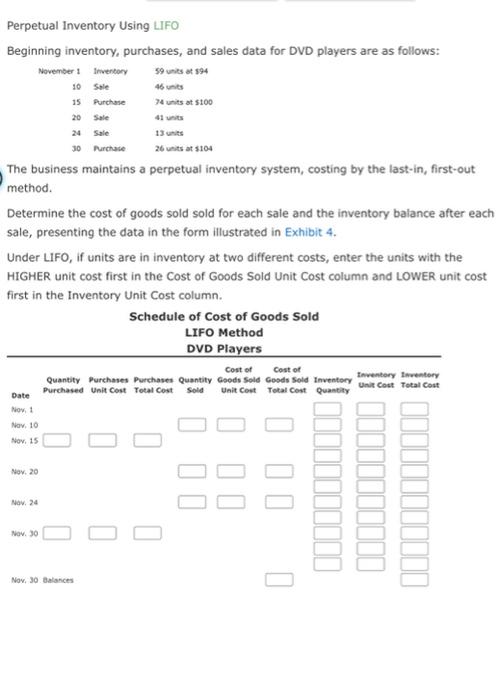
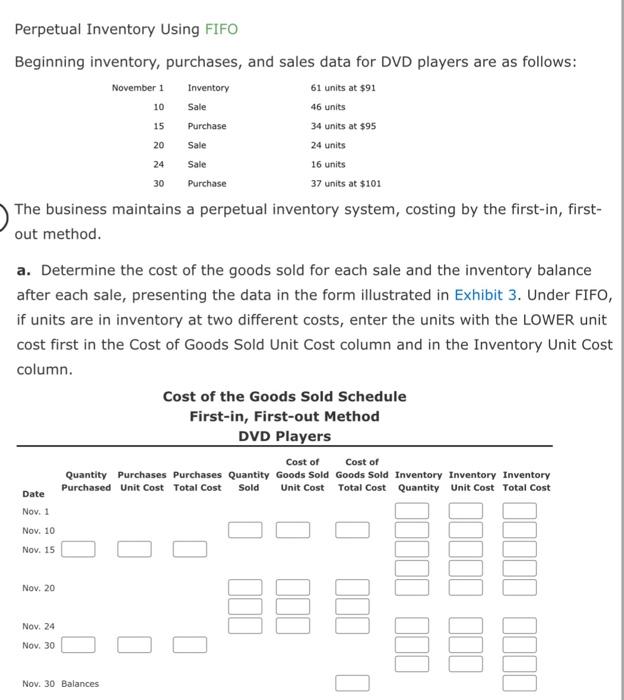
Periodic Inventory by Three Methods The units of an item available for sale during the year were as follows: There are 10 units of the item in the physical inventory at December 31 . The periodic inventory system is used. Round average unit cost to the nearest cent and final answers to the nearest whole dollar, if required. a. Determine the inventory cost by the first-in, first-out method. $ b. Determine the inventory cost by the last-in, first-out method. $ c. Determine the inventory cost by the weighted average cost method. $ FIFO and LIFO Costs Under Perpetual Inventory System The following units of an item were available for sale during the year: The firm uses the perpetual inventory system, and there are 14 units of the item on hand at the end of the year. a. What is the total cost of the ending inventory according to FIFO? b. What is the total cost of the ending inventory according to LIFO? Perpetual Inventory Using FIFO Beginning inventory, purchases, and sales data for prepaid cell phones for December are as follows: Assume that the business maintains a perpetual inventory system, costing by the firstin, first-out method. Determine the cost of goods sold for each sale and the inventory balance after each sale, presenting the data in the form illustrated in Exhibit 3 . Under FIFO, if units are in inventory at two different costs, enter the units with the LOWER unit cost first in the Cost of Goods Sold Unit Cost column and in the Inventory Unit Cost column. Perpetual Inventory Using LIFO Beginning inventory, purchases, and sales data for prepaid cell phones for Decembe are as follows: a. Assuming that the perpetual inventory system is used, costing by the LIFO method, determine the cost of goods sold for each sale and the inventory balance after each sale, presenting the data in the form illustrated in Exhibit 4. Under LIFO, if units are in inventory at two different costs, enter the units with the HIGHER unit cost first in the Cost of Goods Sold Unit Cost column and LOWER unit cost first in the Inventory Unit Cost column. Perpetual Inventory Using LIFO Beginning inventory, purchases, and sales data for DVD players are as follows: The business maintains a perpetual inventory system, costing by the last-in, first-out method. Determine the cost of goods sold sold for each sale and the inventory balance after each sale, presenting the data in the form illustrated in Exhibit 4. Under LIFO, if units are in inventory at two different costs, enter the units with the HIGHER unit cost first in the Cost of Goods Sold Unit Cost column and LOWER unit cost first in the Inventory Unit Cost column. Perpetual Inventory Using FIFO Beginning inventory, purchases, and sales data for DVD players are as follows: The business maintains a perpetual inventory system, costing by the first-in, firstout method. a. Determine the cost of the goods sold for each sale and the inventory balance after each sale, presenting the data in the form illustrated in Exhibit 3. Under FIFO, if units are in inventory at two different costs, enter the units with the LOWER unit cost first in the Cost of Goods Sold Unit Cost column and in the Inventory Unit Cost column 





Step by Step Solution
There are 3 Steps involved in it
Step: 1

Get Instant Access to Expert-Tailored Solutions
See step-by-step solutions with expert insights and AI powered tools for academic success
Step: 2

Step: 3

Ace Your Homework with AI
Get the answers you need in no time with our AI-driven, step-by-step assistance
Get Started


